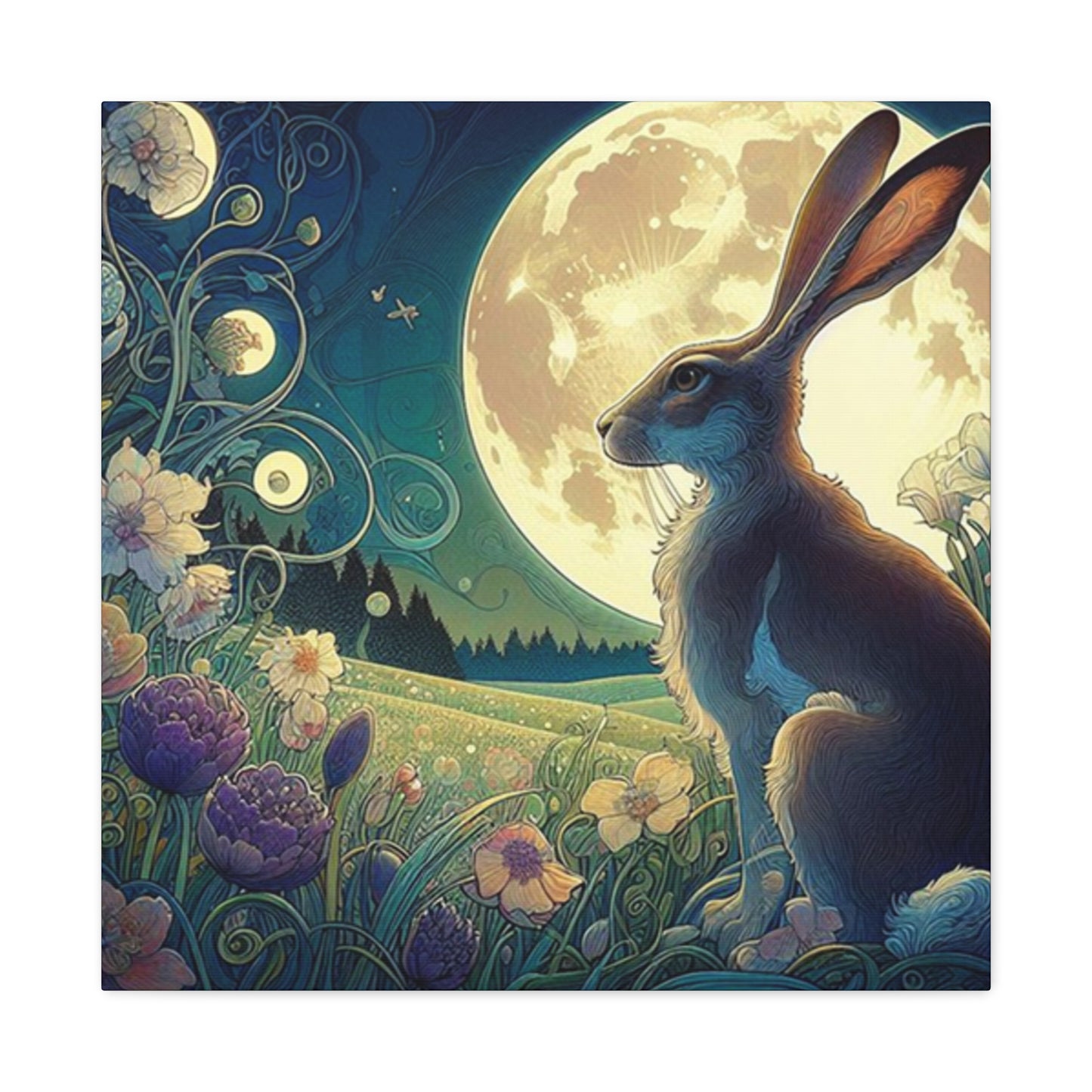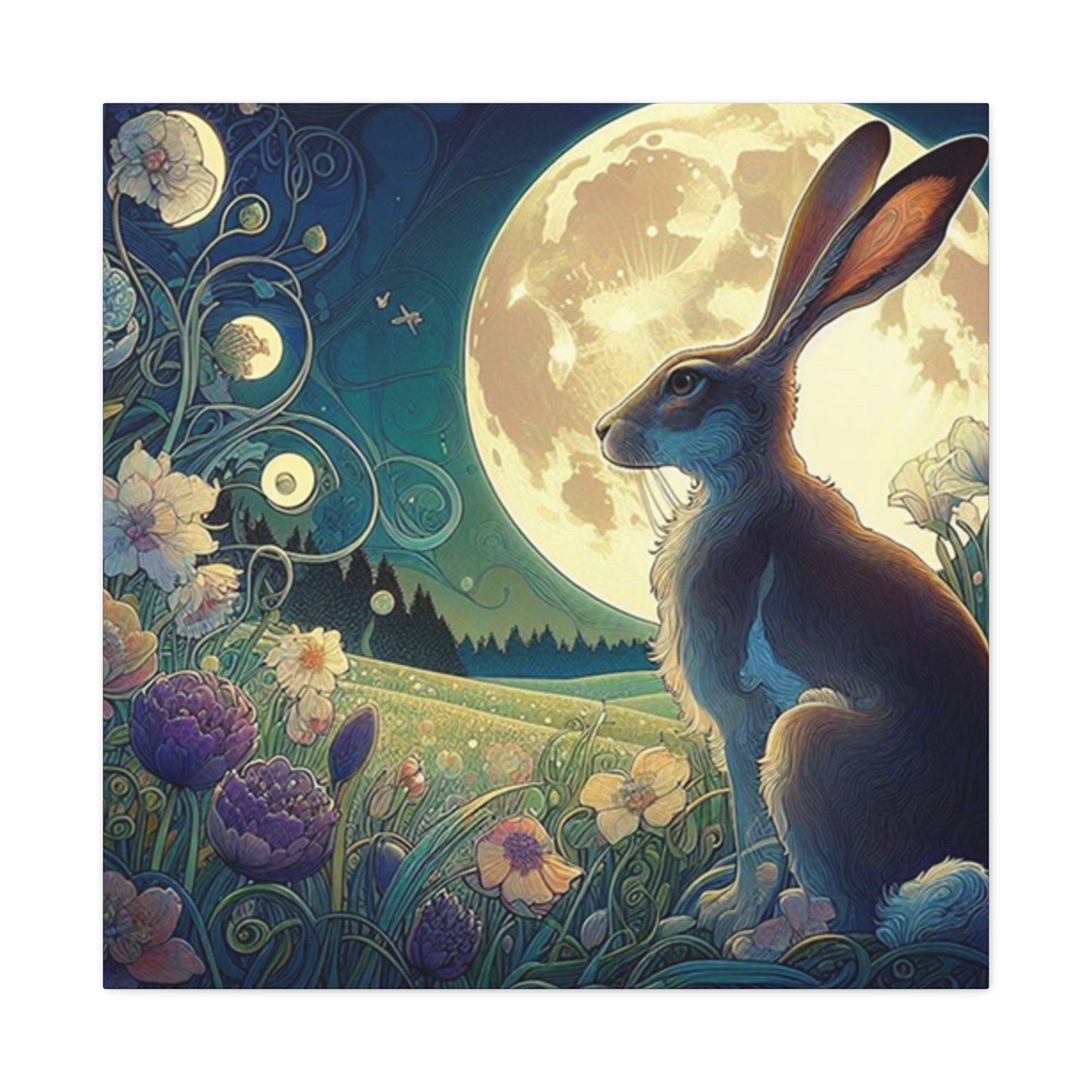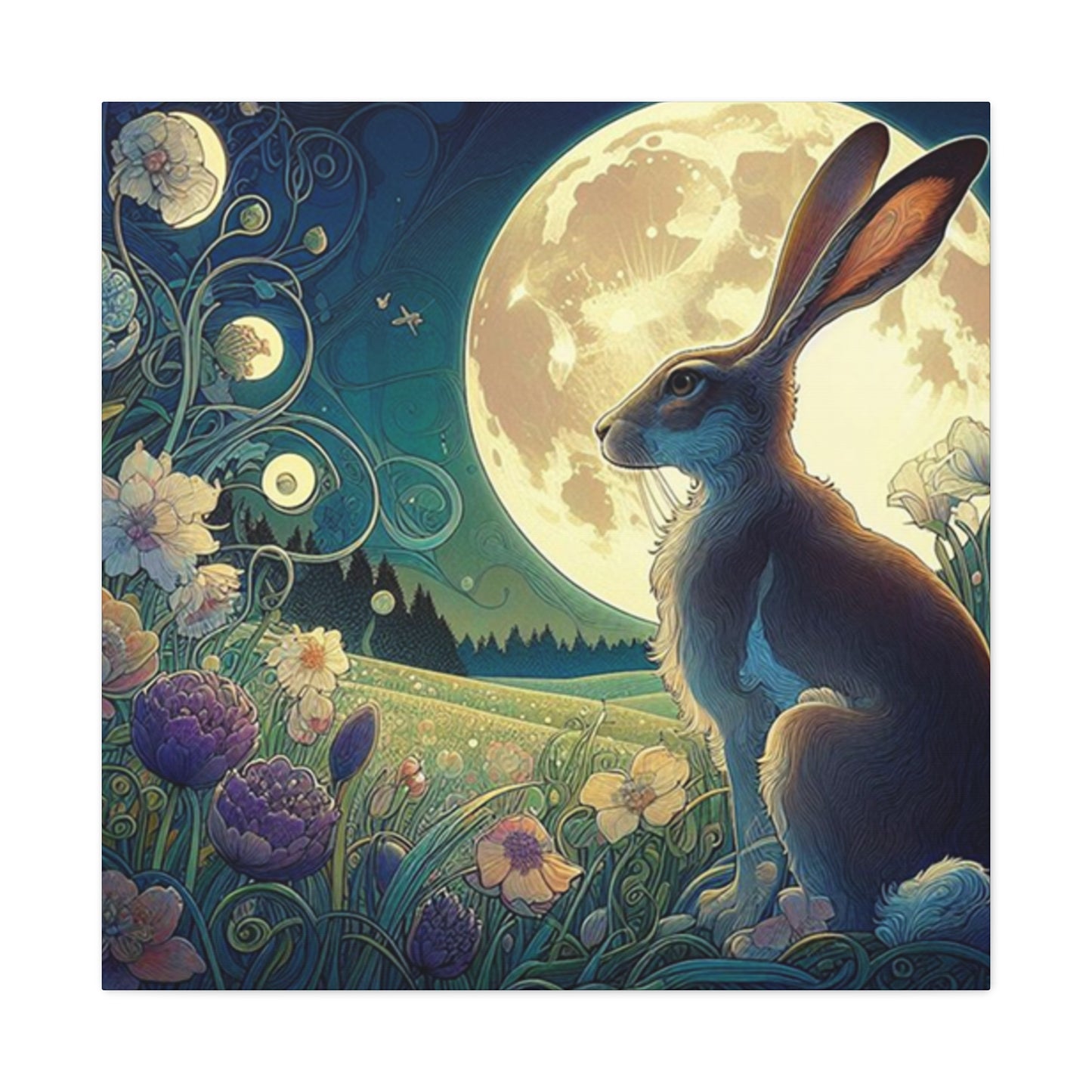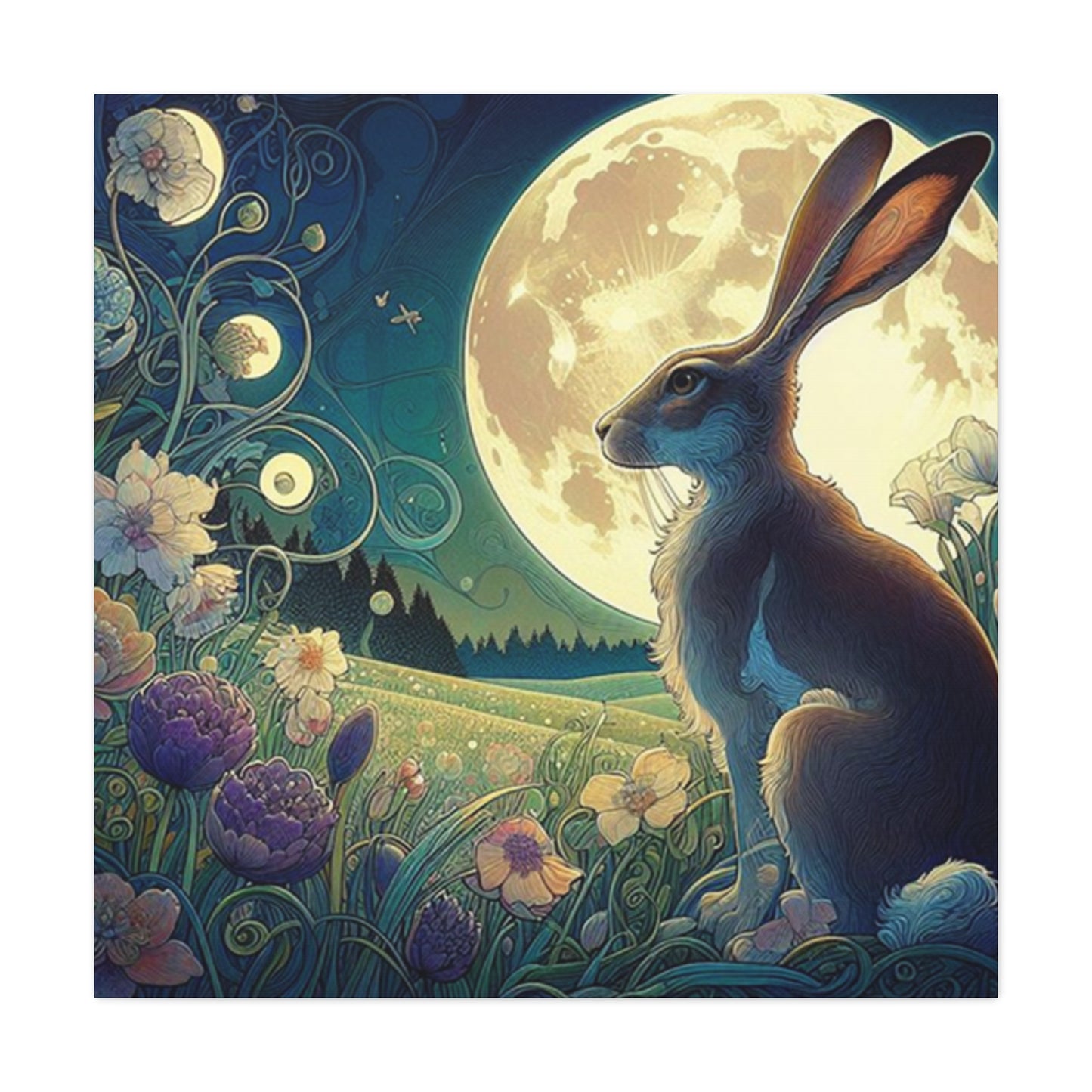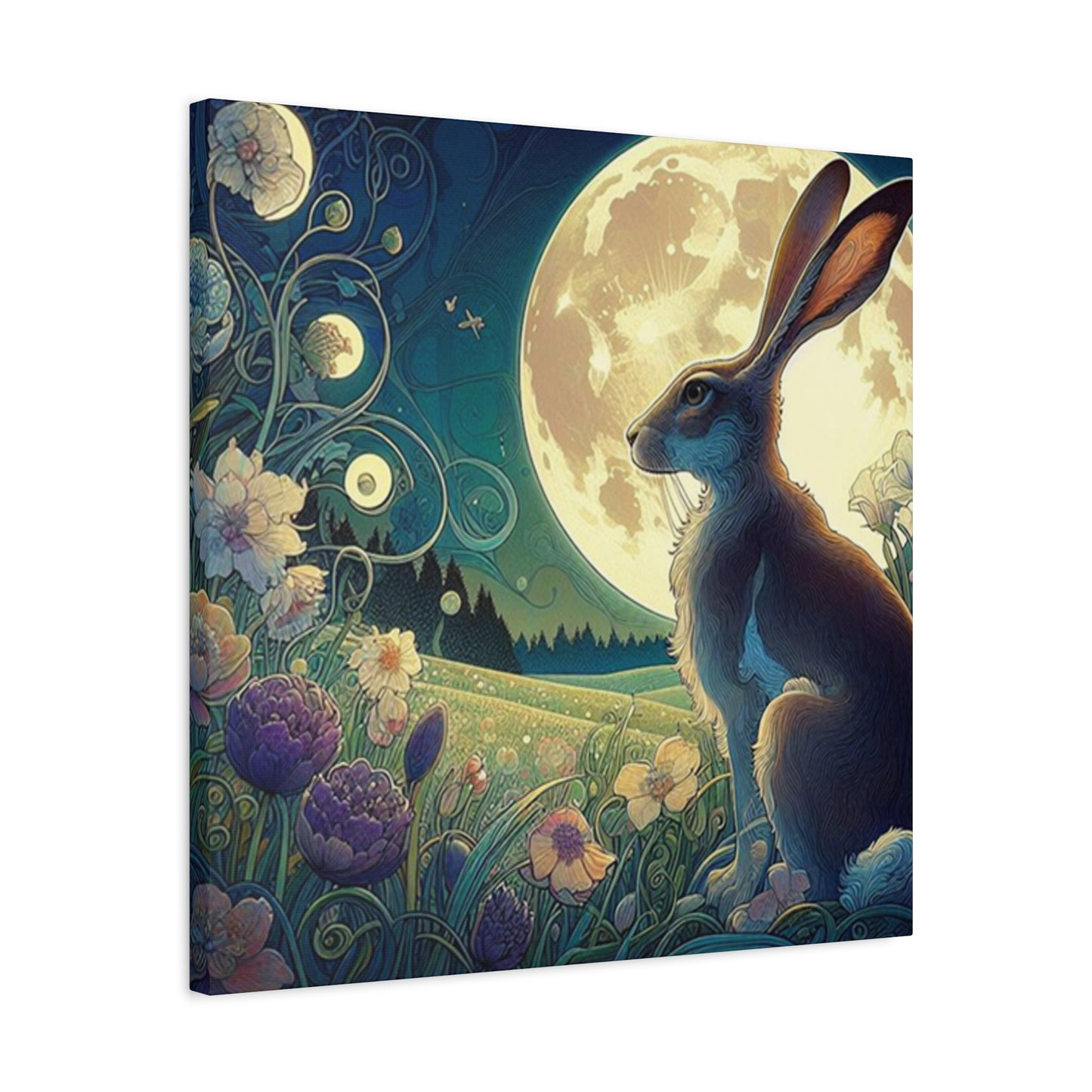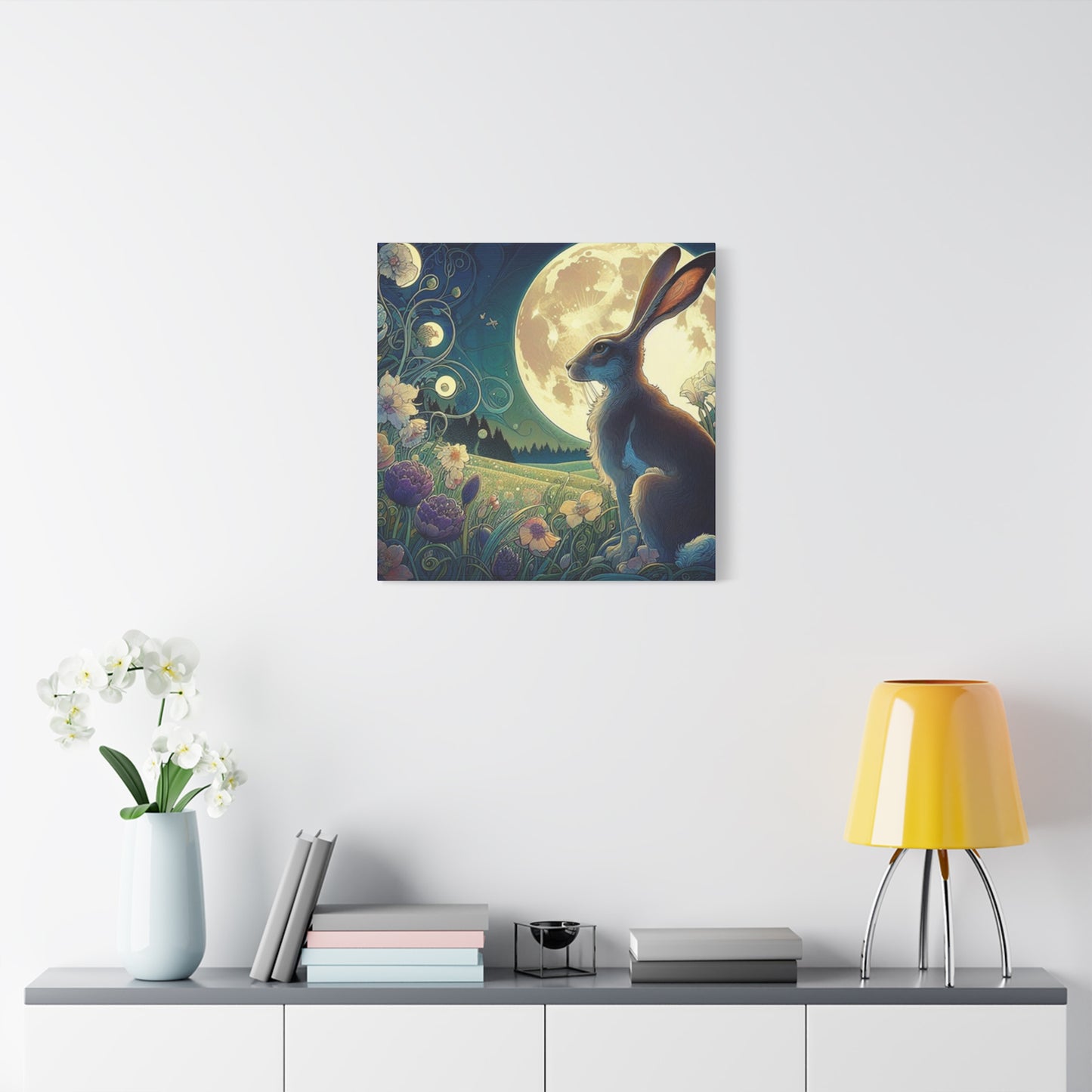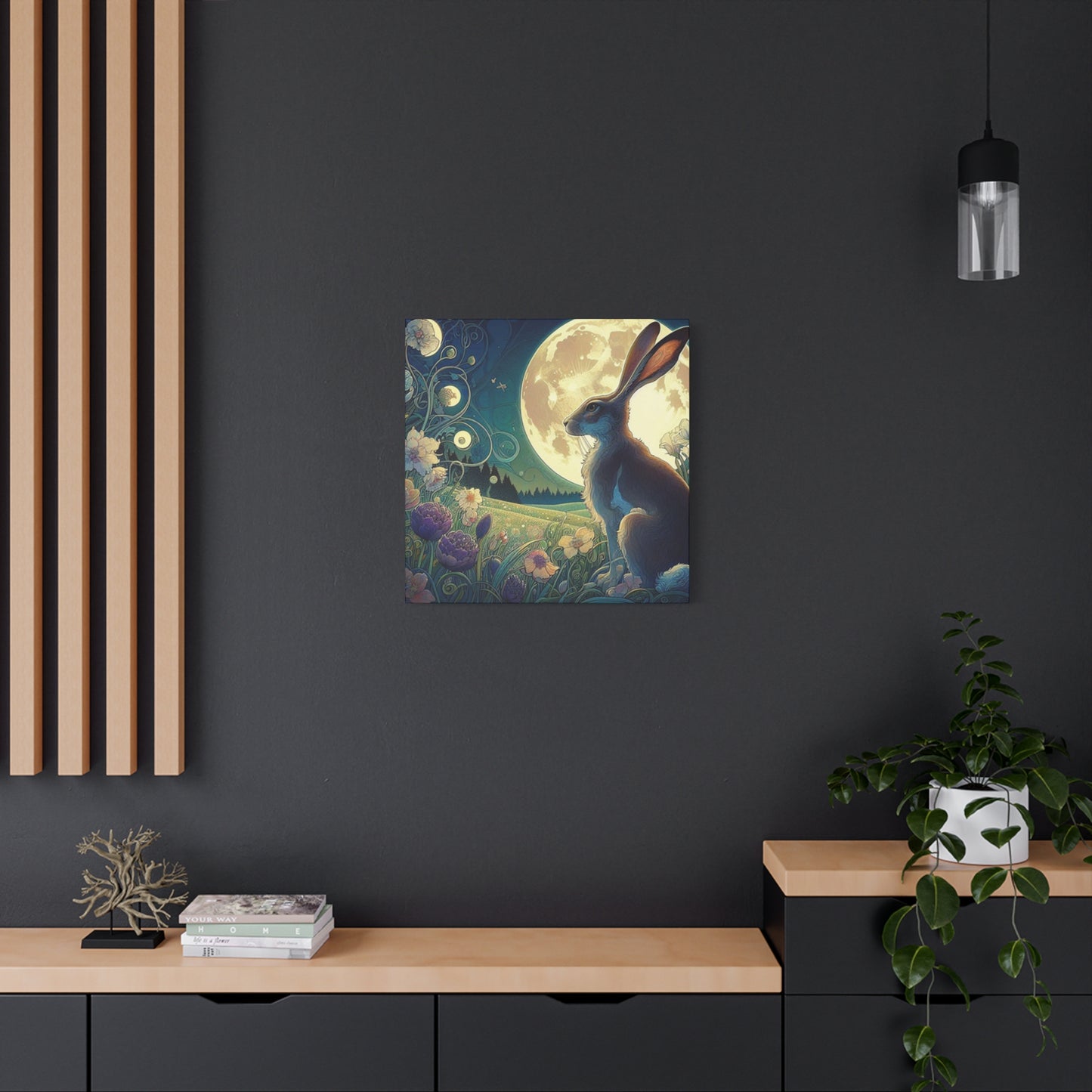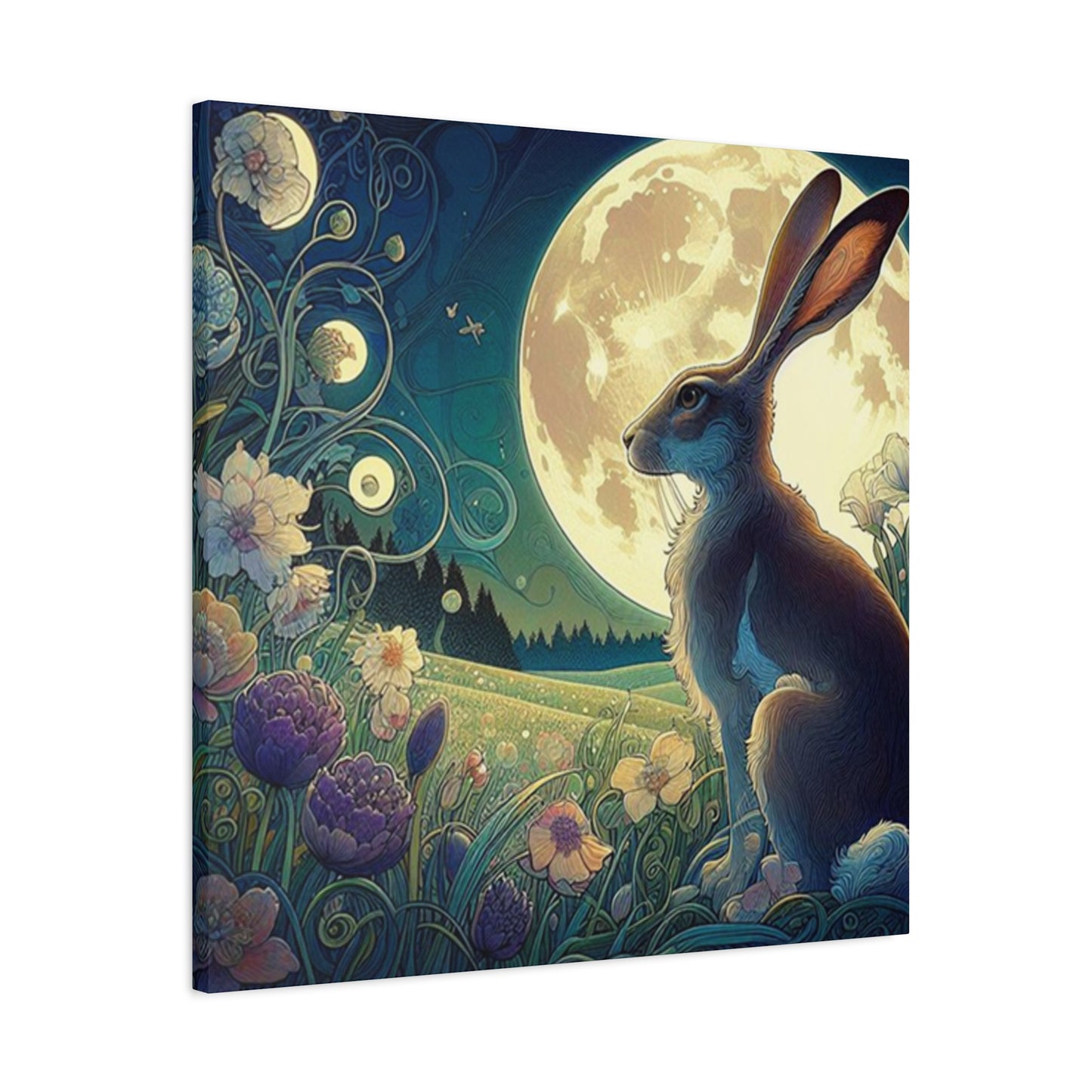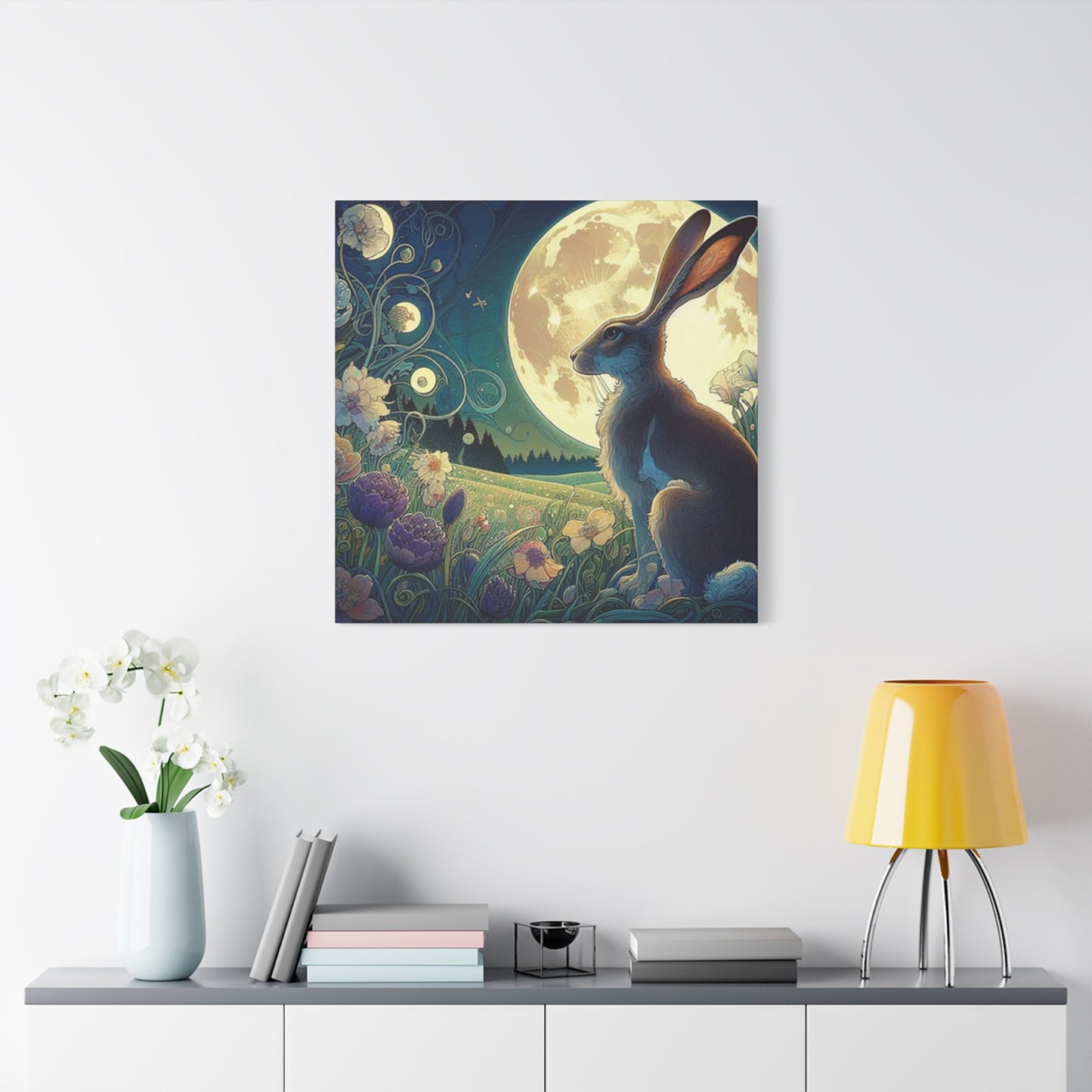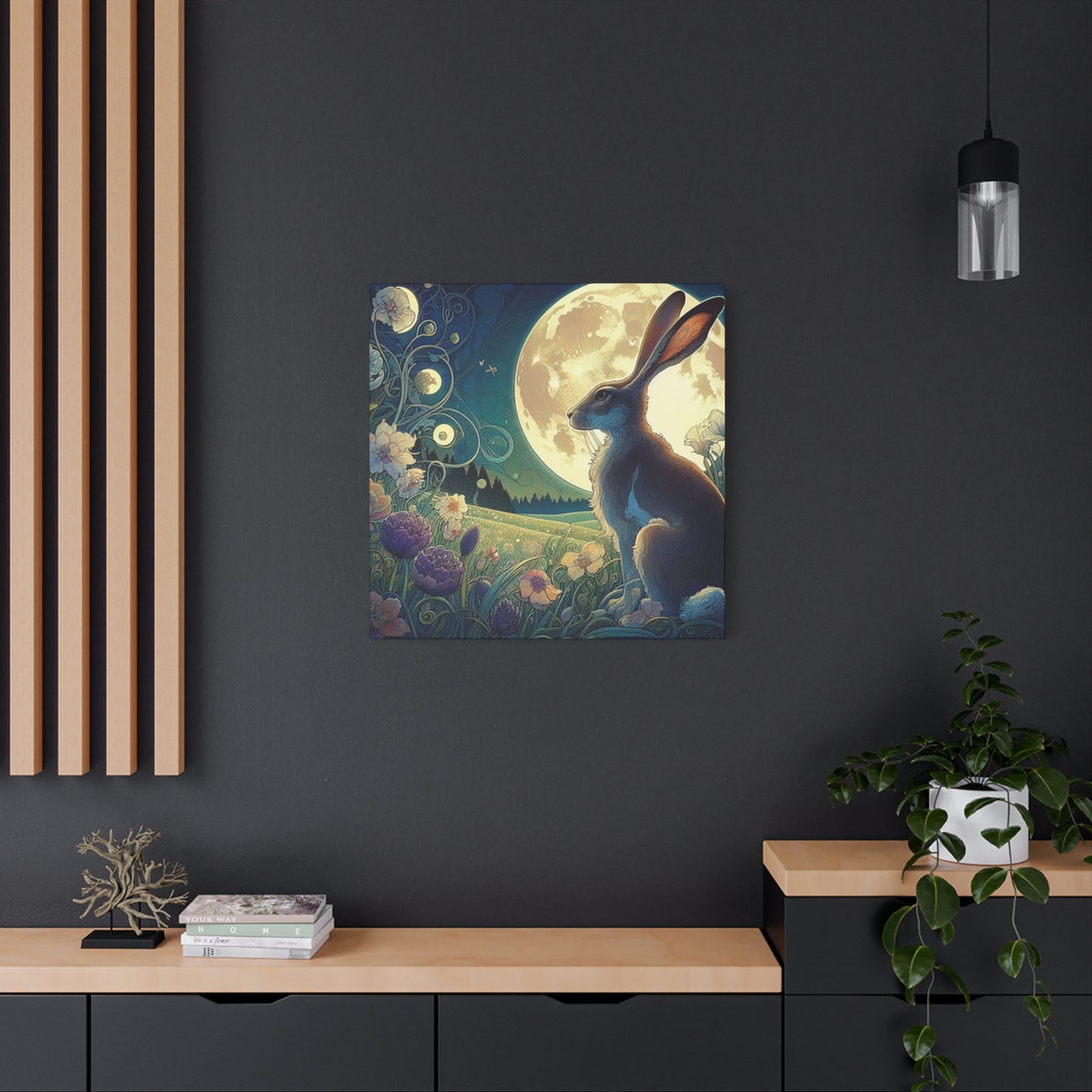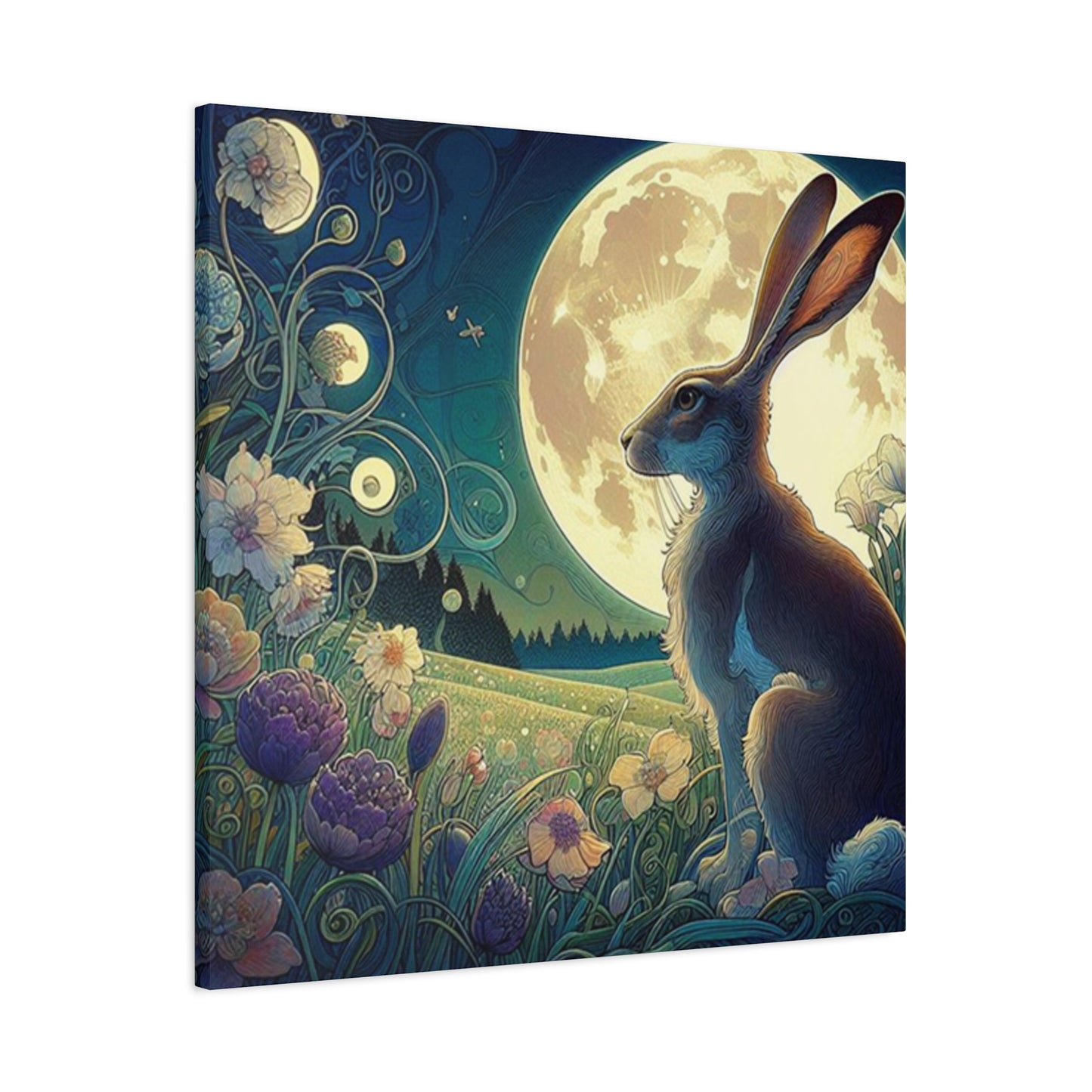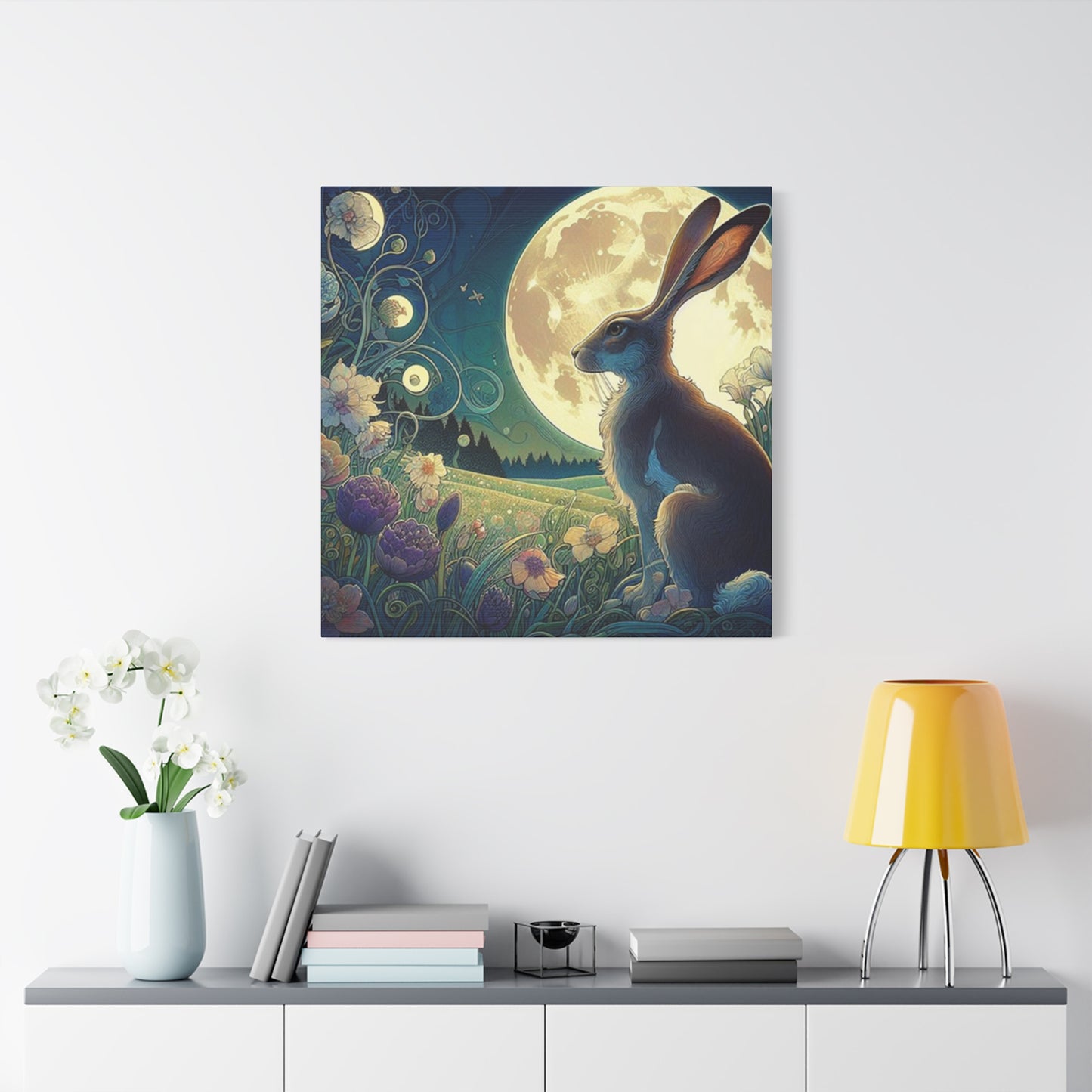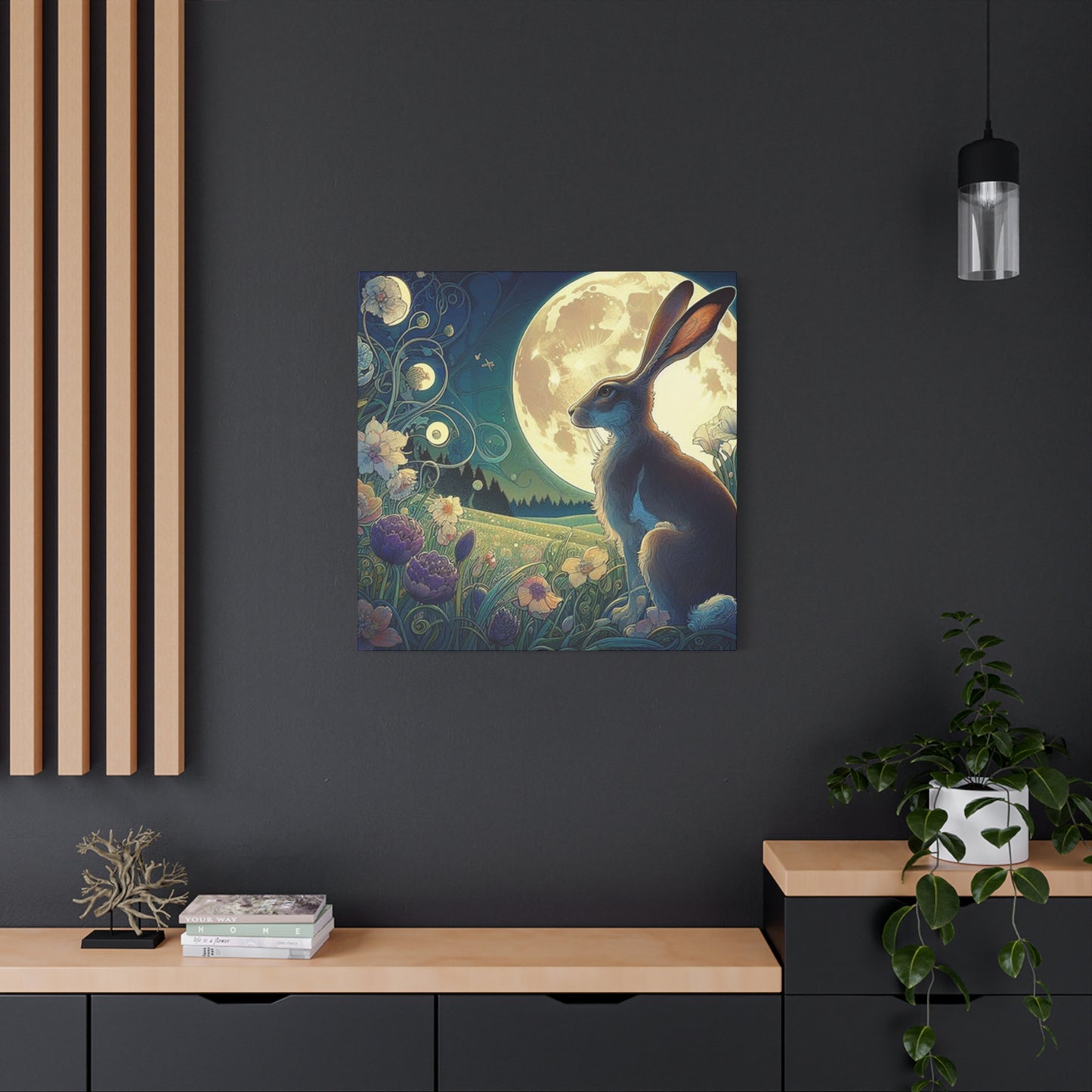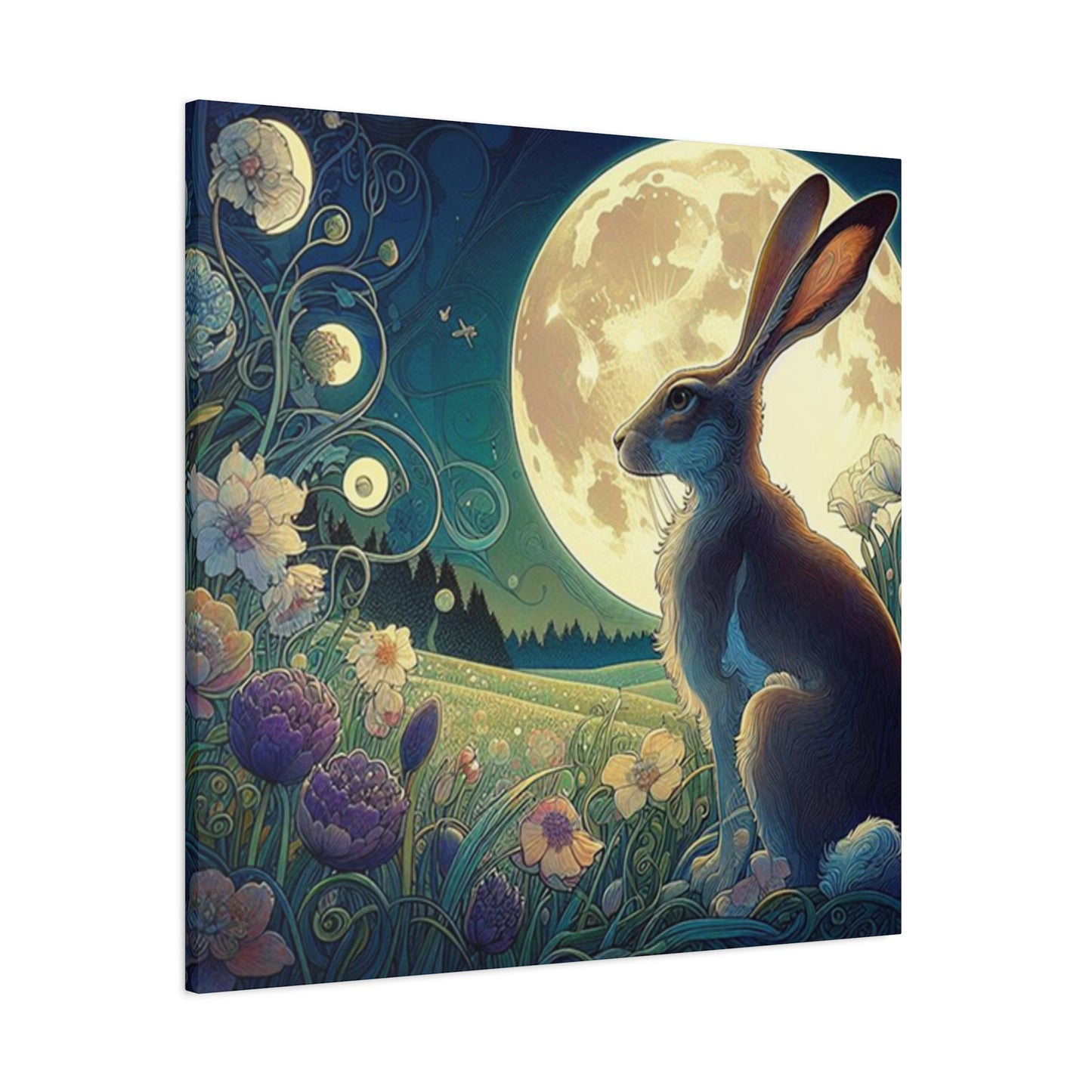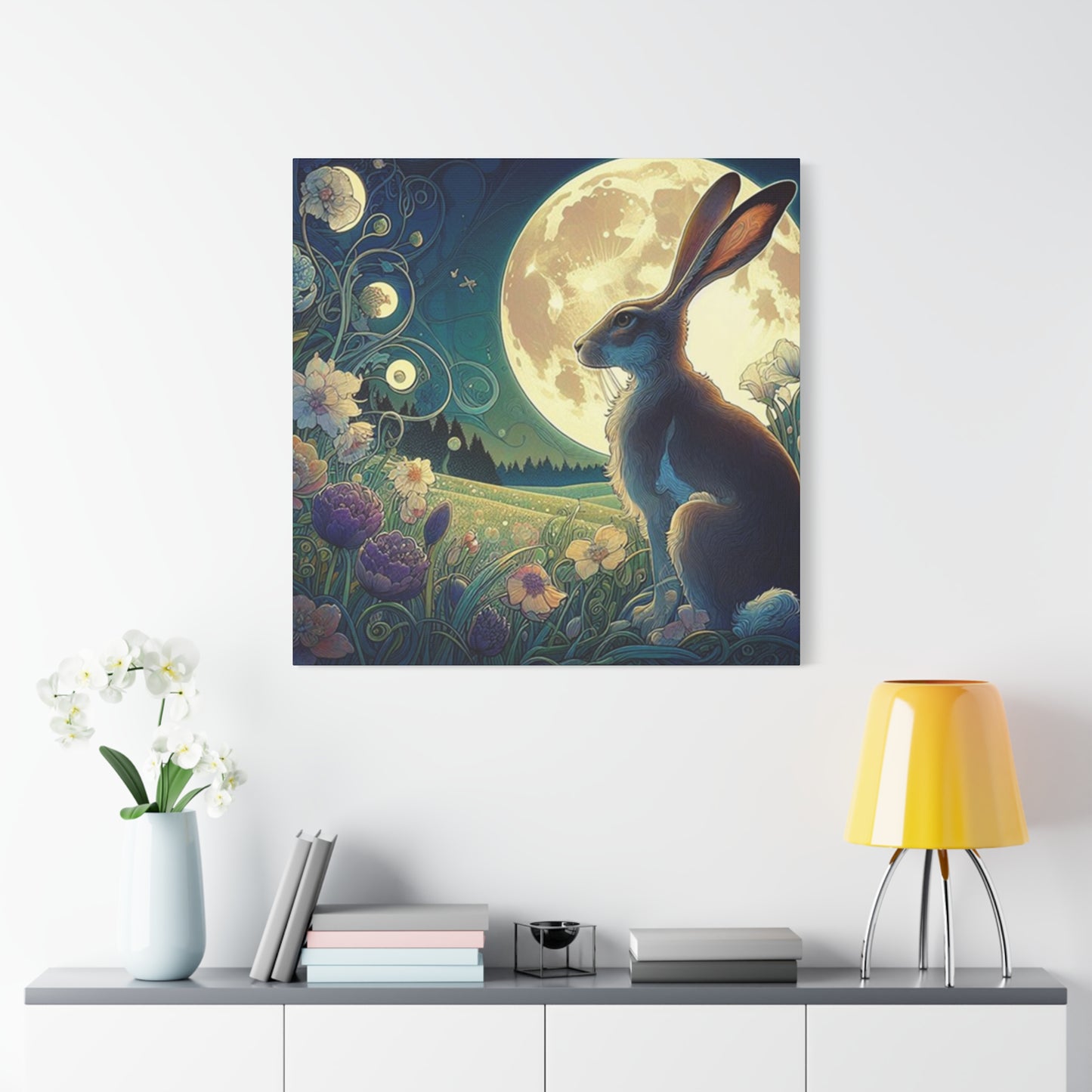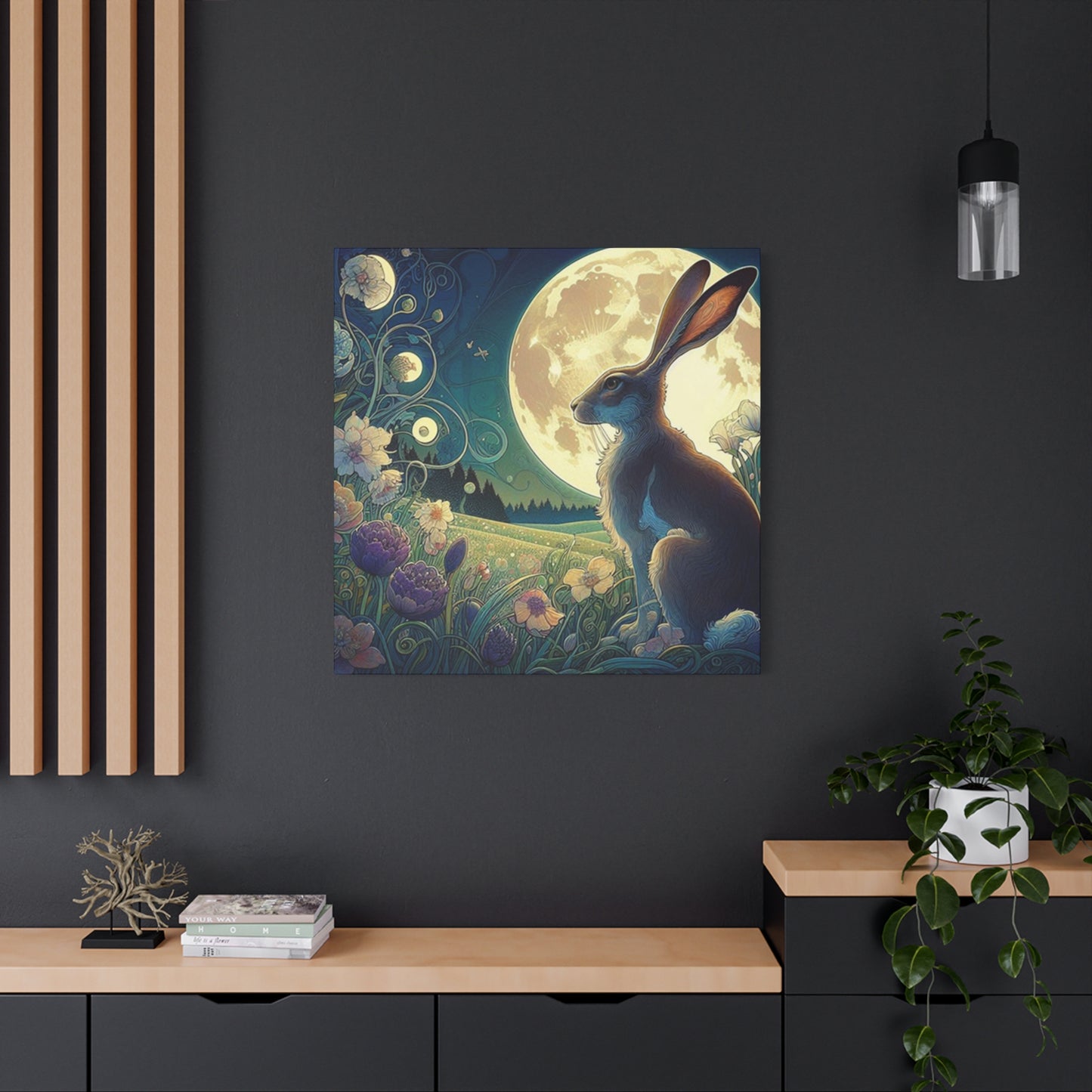Exploring the Spiritual Meaning Behind Full Moon and Rabbit Wall Art Prints
The full moon has captivated humanity throughout history, serving as a powerful symbol in artistic expression. When incorporated into wall art, the full moon carries profound symbolic weight that resonates with viewers on both conscious and subconscious levels. Artists have long recognized the moon's ability to represent cycles of renewal, feminine energy, and the mysterious forces that govern our natural world.
In contemporary wall art, the full moon often serves as a focal point that draws the eye and creates emotional depth within a composition. The luminous orb represents completeness, fulfillment, and the peak of natural cycles. Many cultures associate the full moon with heightened intuition, spiritual awakening, and connection to ancestral wisdom. These associations make full moon imagery particularly compelling in artistic works designed to evoke contemplation and inner reflection.
The artistic representation of the full moon can vary dramatically depending on the artist's technique and intended message. Some creators choose to depict the moon with photorealistic precision, capturing every crater and shadow with meticulous detail. Others prefer a more stylized approach, using the moon as an abstract element that suggests rather than depicts literal lunar features. The choice of representation often reflects the overall tone and purpose of the artwork.
Color symbolism plays a crucial role in how the full moon is portrayed in wall art. Traditional silver and white moonlight creates a sense of purity and transcendence, while golden moons can suggest warmth and earthly connection. Some contemporary artists experiment with unexpected color palettes, using blues, purples, or even warm oranges to create unique emotional responses and challenge conventional expectations about lunar imagery.
The positioning of the full moon within a composition significantly impacts its symbolic meaning. A moon placed high in the frame can suggest aspiration, spiritual reaching, or divine connection. Lower placement might indicate grounding, reflection of earthly concerns, or the moon's influence on terrestrial matters. Central positioning often creates balance and harmony, making the moon a stabilizing force within the overall composition.
Artists frequently use the full moon as a source of illumination within their compositions, allowing its light to reveal or conceal various elements of the scene. This technique creates dramatic lighting effects that can transform ordinary subjects into mysterious, ethereal visions. The interplay between moonlight and shadow becomes a powerful tool for creating mood and atmosphere.
The scale of the full moon in relation to other compositional elements also carries symbolic significance. An oversized moon can create a sense of overwhelming natural power or spiritual presence, while a smaller moon might suggest subtlety, delicate beauty, or the quiet influence of lunar forces. Artists must carefully consider these proportional relationships to achieve their desired emotional impact.
Contemporary wall art featuring the full moon often incorporates mixed media techniques that enhance the moon's symbolic power. Metallic leaf, reflective materials, or texture paste can create actual luminosity that changes as viewing light shifts throughout the day. These interactive elements make the moon appear to pulse with life, creating a dynamic viewing experience that engages observers on multiple sensory levels.
The full moon's cyclical nature makes it an ideal symbol for artworks dealing with themes of time, change, and natural rhythms. Many artists use lunar imagery to explore concepts of growth, decay, renewal, and the eternal dance between creation and destruction. These philosophical underpinnings give depth to decorative artworks and invite viewers to engage with larger existential questions.
The Crow as a Mystical Creature in Paintings
Crows have held mystical significance across cultures and throughout history, making them compelling subjects for artistic exploration. In the realm of painting, these intelligent birds carry complex symbolic meanings that range from wisdom and prophecy to mystery and transformation. Artists drawn to crow imagery often seek to capture not just the physical characteristics of these remarkable birds, but also their profound spiritual and mythological associations.
The crow's jet-black plumage creates natural opportunities for dramatic contrast in paintings, especially when set against lighter backgrounds or celestial elements. This stark visual distinction allows artists to create powerful focal points and explore themes of duality, opposition, and balance. The crow's silhouette becomes a striking graphic element that can anchor a composition while maintaining an air of mystery and intrigue.
In many mythological traditions, crows serve as messengers between the mortal world and spiritual realms. Norse mythology presents ravens as Odin's companions, Huginn and Muninn, who fly across the world gathering information and wisdom. Celtic traditions often depict crows as shapeshifters associated with war goddesses and prophetic visions. These rich mythological backgrounds provide contemporary artists with deep wells of symbolic meaning to draw from in their creative works.
The intelligence of crows has been scientifically documented, with researchers discovering their ability to use tools, recognize faces, and pass knowledge to subsequent generations. This remarkable cognitive ability translates into artistic representations that often emphasize the crow's piercing gaze, alert posture, and sense of watchful awareness. Painters frequently focus on the crow's eyes as windows to an ancient, knowing intelligence that seems to peer directly into the viewer's soul.
Crows' social behaviors also influence their artistic representation. These birds are known to gather in large groups called murders, creating opportunities for artists to explore themes of community, collective wisdom, and the power of numbers. Some paintings feature solitary crows to emphasize individuality and independence, while others show groups of birds to suggest social connections and shared knowledge.
The crow's association with death and rebirth makes it a popular subject for artworks exploring transformation and change. Rather than simple harbingers of doom, crows in contemporary art often represent the necessary cycle of endings and new beginnings. Artists use crow imagery to suggest that death is not final but part of a larger pattern of renewal and growth.
Flight patterns and poses offer artists numerous compositional possibilities when depicting crows. A crow in flight can suggest freedom, transcendence, or the delivery of important messages. Perched crows might represent watchfulness, patience, or the pause before important action. The angle of the head, position of wings, and overall posture all contribute to the emotional impact and symbolic meaning of the artwork.
The crow's adaptability to various environments makes it a versatile subject for different artistic styles and settings. Urban crows navigating city landscapes can represent resilience and adaptation to modern life. Forest crows might symbolize connection to wild nature and ancient wisdom. The choice of setting significantly influences how viewers interpret the crow's symbolic meaning within the artwork.
Texture and technique play important roles in successfully capturing the essence of crows in paintings. The sleek, reflective quality of crow feathers requires careful attention to light and shadow. Some artists emphasize the almost metallic sheen of healthy crow plumage, while others focus on the matte, velvety appearance of feathers in different lighting conditions. These technical considerations directly impact the emotional tone and symbolic interpretation of the finished artwork.
Color relationships become particularly important when painting crows, as their black feathers must be distinguished from backgrounds and other dark elements within the composition. Artists often use subtle variations in black tones, from warm charcoal to cool blue-blacks, to create depth and visual interest. Strategic use of highlights and reflected light can bring crow subjects to life without compromising their essential dark mystique.
Combining Full Moon and Crow: A Powerful Visual Theme
The pairing of full moon and crow imagery creates one of the most evocative and symbolically rich themes in contemporary wall art. This combination draws from ancient mythologies, natural phenomena, and universal archetypes that resonate across cultural boundaries. When skillfully executed, full moon and crow artworks can simultaneously suggest mystery, wisdom, transformation, and spiritual connection.
The visual contrast between the luminous full moon and the dark silhouette of the crow creates immediate dramatic impact. This stark opposition of light and dark serves as a metaphor for the balance between opposing forces that govern existence. The bright moon illuminates while the dark crow absorbs light, creating a dynamic relationship that suggests the interdependence of seemingly contradictory elements.
Compositionally, the circular form of the full moon provides an excellent counterpoint to the angular, organic shapes of the crow. Artists can use this geometric relationship to create visual harmony while maintaining the tension that gives the theme its emotional power. The moon's perfect roundness can serve as a backdrop that emphasizes the crow's more complex, irregular form, or the bird can be positioned to partially obscure the lunar disc, creating intriguing negative spaces.
The scale relationships between moon and crow offer numerous creative possibilities. An oversized moon dwarfing a small crow can suggest the overwhelming power of natural forces or cosmic influences. Conversely, a large crow positioned near a smaller moon might emphasize the bird's role as an active agent within the cosmic order. Artists must carefully balance these scale relationships to achieve their intended symbolic and emotional effects.
Lighting dynamics become particularly complex when combining moon and crow imagery. The moon serves as both a light source and a reflective surface, while the crow's dark feathers absorb and redirect light in subtle ways. Skilled artists can use these optical properties to create atmospheric effects that enhance the mysterious mood of their compositions. Moonlight can rim the crow's feathers with silver highlights while leaving most of the bird in dramatic shadow.
The positioning of the crow in relation to the moon carries significant symbolic weight. A crow perched on the edge of the moon might suggest the bird's role as guardian or guide. A crow flying across the lunar disc could represent messages traveling between earthly and celestial realms. Multiple crows arranged around the moon might indicate collective wisdom or shared spiritual significance.
Environmental elements can enhance the symbolic power of full moon and crow combinations. Bare tree branches create natural perches for crows while adding to the mysterious atmosphere. Misty or cloudy skies can partially obscure the moon, creating dramatic lighting effects and suggesting hidden knowledge or veiled truths. Water reflections can double the visual impact while adding themes of reflection and depth.
The time of night suggested by the artwork influences its emotional impact. Early evening scenes with both sun and moon visible create different moods than deep midnight compositions. Artists can use color temperature and atmospheric effects to suggest specific times and create corresponding emotional responses. Cool blue-grays suggest deep night, while warmer purples and browns might indicate twilight transitions.
Seasonal associations add another layer of meaning to full moon and crow imagery. Autumn scenes with bare branches and fallen leaves emphasize themes of change and transition. Winter compositions with snow-covered landscapes can suggest endurance and survival. Spring settings might focus on renewal and growth, while summer scenes could emphasize abundance and fulfillment.
Cultural references can be subtly incorporated into full moon and crow artworks to add depth and meaning. Celtic knots, Norse runes, or Native American symbols can be worked into compositions without overwhelming the primary imagery. These cultural elements can help viewers connect with specific traditions while maintaining the universal appeal of the moon and crow theme.
How Full-Moon Crow Art Represents Transformation
Transformation themes run deep in full-moon crow art, drawing from both natural observations and spiritual traditions that recognize these elements as powerful symbols of change and renewal. The full moon's cyclical appearance and the crow's association with death and rebirth combine to create artwork that speaks to fundamental processes of growth, change, and spiritual evolution.
The lunar cycle itself represents one of nature's most visible examples of transformation. The moon waxes and wanes in a predictable pattern that has guided human activities for millennia. When depicted at its fullest phase, the moon represents the culmination of this transformative cycle, suggesting completion, fulfillment, and the peak of natural power. Artists use this symbolism to suggest moments of personal or spiritual achievement.
Crows undergo their own transformative processes that artists can incorporate into symbolic representations. Young crows molt their juvenile feathers to develop adult plumage, literally transforming their appearance as they mature. This natural process becomes a metaphor for personal growth and the shedding of old identities to embrace new ones. Artists might suggest this transformation through varying feather textures or mixed plumage patterns.
The crow's intelligence allows it to adapt and learn throughout its lifetime, representing intellectual and behavioral transformation. These birds can modify their behavior based on experience, learn from other crows, and even pass knowledge to subsequent generations. This adaptive capacity makes the crow an ideal symbol for conscious evolution and the willingness to change based on new understanding.
Mythological traditions often present crows as psychopomps, creatures that guide souls through transformative passages between life and death. This role positions the crow as a facilitator of transformation rather than merely a symbol of it. In full-moon crow art, this guidance aspect can be suggested through the bird's gaze direction, wing position, or relationship to other compositional elements.
The interplay between light and shadow in full-moon crow artworks creates visual metaphors for transformation. The moon's light can gradually reveal or conceal parts of the crow, suggesting the slow process of change and revelation. Artists can use graduated lighting effects to show the crow emerging from darkness or dissolving into shadow, representing different stages of transformative processes.
Seasonal transformation provides another rich source of symbolic meaning in full-moon crow art. The changing seasons represent natural cycles of death and renewal that mirror personal and spiritual transformation. Artists might incorporate subtle seasonal markers like changing leaf colors, snow patterns, or atmospheric conditions to suggest specific types of transformation or stages of growth.
Movement and flight patterns in crow imagery can represent different aspects of transformation. A crow taking flight might suggest the beginning of a transformative journey, while a landing bird could indicate the completion of change. Crows in various stages of flight can represent the ongoing process of transformation, with each wing position suggesting different phases of development.
The crow's relationship with its environment in full-moon settings can illustrate transformation themes. A crow adapting to urban environments represents adjustment to changing circumstances. Forest crows might symbolize connection to natural cycles of transformation. The choice of setting helps viewers understand the type of transformation being explored in the artwork.
Color symbolism becomes particularly important when exploring transformation themes. The traditional black of crow feathers might be enriched with subtle color variations that suggest hidden potential or emerging new qualities. The moon's light can introduce color shifts that imply change and development. Artists might use temperature shifts from cool to warm colors to suggest transformation in progress.
Compositional movement can reinforce transformation themes by creating visual pathways that guide the viewer's eye through the artwork. The positioning of moon and crow can create implied motion that suggests change and development. Artists might use leading lines, color gradations, or tonal shifts to create a sense of movement and transformation within static compositions.
Using Dark and Light Contrast in Full-Moon Crow Paintings
The strategic use of contrast between dark and light elements forms the foundation of compelling full-moon crow paintings. This fundamental artistic principle becomes particularly powerful when applied to subjects that naturally embody such dramatic tonal differences. The luminous moon and shadowy crow create opportunities for artists to explore the full range of values while creating emotionally resonant artworks.
Understanding the physics of moonlight helps artists create more convincing and atmospheric paintings. Moonlight is actually reflected sunlight, which gives it a cooler color temperature than direct solar illumination. This cooler quality creates subtle blue and gray tones that artists can use to distinguish moonlit scenes from daytime compositions. The relatively low intensity of moonlight also means that shadows remain deep and mysterious, perfect for creating dramatic contrast.
The crow's black feathers present unique challenges and opportunities for artists working with light and dark relationships. Pure black rarely exists in nature, as even the darkest surfaces reflect some light and show subtle color variations. Skilled artists use these subtle variations to create form and dimension within dark areas while maintaining the crow's essential dark character. Reflected moonlight can create rim lighting that defines the bird's silhouette without compromising its mysterious nature.
Value structure becomes critical in successful full-moon crow paintings. Artists must carefully orchestrate the full range from pure white moonlight to deepest shadow, using intermediate tones to create smooth transitions and believable atmospheric effects. The positioning of middle values determines whether the overall composition feels balanced or creates dramatic tension through high contrast relationships.
Edge quality plays an important role in managing dark and light relationships. Sharp edges between light and dark areas create dramatic, graphic effects that can emphasize the symbolic power of the imagery. Softer transitions might suggest atmospheric effects or more subtle emotional moods. Artists can vary edge quality throughout a composition to create visual interest and guide viewer attention to important focal points.
Atmospheric perspective affects how dark and light relationships appear at different distances within a composition. Distant objects appear lighter and less contrasted due to atmospheric interference, while closer objects maintain stronger value relationships. Artists can use these natural phenomena to create depth and dimension while maintaining the dramatic impact of their primary dark and light contrasts.
The direction and quality of moonlight significantly impact the shadow patterns that define form and create mood in crow paintings. Front lighting flattens forms but can create dramatic silhouettes. Side lighting emphasizes texture and dimensionality while maintaining mystery in shadow areas. Back lighting can create luminous rim effects that separate the crow from its background while preserving its dark, mysterious character.
Color temperature contrasts can enhance the power of value relationships in full-moon crow paintings. The cool light of the moon contrasts beautifully with warmer reflected light from other sources or subtle warm tones in shadow areas. These temperature differences create additional depth and visual interest while maintaining the essential drama of the light and dark theme.
Texture rendering becomes particularly important when working with extreme contrasts. The smooth surface of the moon requires different handling than the complex texture of crow feathers. Artists must develop techniques for suggesting texture within both light and dark areas without losing the overall impact of the contrast relationships. Successful texture work enhances realism while supporting the symbolic content of the artwork.
Reflected light adds complexity to dark and light relationships while maintaining natural believability. Moonlight bouncing off surfaces can create secondary illumination that reveals details in shadow areas without compromising the overall contrast. Artists can use reflected light to create subtle modeling in dark areas while preserving the dramatic impact of the primary light source.
The psychology of contrast affects how viewers respond emotionally to full-moon crow paintings. High contrast relationships create excitement and drama, while lower contrast might suggest subtlety and contemplation. Artists can manipulate contrast levels to control the emotional intensity of their work while maintaining the essential character of the moon and crow theme.
The Popularity of Nighttime Scenes in Wall Art
Nighttime imagery has gained tremendous popularity in contemporary wall art, driven by both aesthetic preferences and psychological needs in modern living environments. The appeal of nocturnal scenes extends beyond mere visual beauty to address deeper human connections with mystery, tranquility, and the restorative power of darkness. This trend reflects changing lifestyle patterns and a growing appreciation for the subtle beauty of evening and night.
Urban living has disconnected many people from natural nighttime experiences, making nocturnal wall art a way to bring the beauty and mystery of night into home and office environments. City dwellers who rarely experience true darkness or see star-filled skies find nocturnal paintings offer a connection to natural rhythms and the peaceful qualities associated with nighttime. These artworks serve as windows to experiences that modern life often obscures.
The color palettes associated with nighttime scenes offer sophisticated alternatives to brighter, more traditional decorative schemes. Deep blues, purples, blacks, and silvery grays create elegant, calming environments that promote relaxation and contemplation. These darker color schemes can make rooms feel more intimate and cozy while providing sophisticated backdrops for contemporary furnishings and lighting.
Psychological research suggests that viewing nighttime scenes can have calming effects on stress levels and promote mental relaxation. The subdued lighting and peaceful subjects typical of nocturnal art can help create environments conducive to unwinding after busy days. This therapeutic aspect of nighttime wall art makes it particularly appealing for bedrooms, meditation areas, and other relaxation-focused rooms.
The technical challenges of painting nighttime scenes attract artists seeking to develop their skills in handling complex lighting situations and subtle color relationships. Working with limited light sources requires mastery of value relationships, atmospheric effects, and edge control. These technical demands result in artworks that demonstrate high levels of artistic skill while creating compelling visual experiences.
Seasonal variations in nighttime scenes provide ongoing interest and connection to natural cycles. Winter nights with snow-covered landscapes offer different moods than summer evenings with warm, humid atmospheres. Artists can explore these seasonal differences while maintaining the essential peaceful, mysterious qualities that make nighttime scenes so appealing to contemporary audiences.
The symbolic associations of night with rest, dreams, and subconscious exploration resonate with audiences seeking deeper meaning in their decorative choices. Nighttime wall art can suggest themes of introspection, spiritual seeking, and connection to inner wisdom. These symbolic dimensions add depth to purely decorative functions and create artworks that engage viewers on multiple levels.
Artificial lighting design in modern homes and offices creates new opportunities for interactive relationships between wall art and environmental illumination. Nighttime paintings can change dramatically under different lighting conditions, revealing new details and creating different moods throughout the day. This dynamic quality makes nocturnal art particularly engaging in contemporary living situations.
The photography and digital art movements have influenced painted nighttime scenes by introducing new compositional approaches and technical possibilities. Artists can draw inspiration from time-lapse photography, astrophotography, and digital manipulation techniques while maintaining the unique qualities of traditional painting media. This cross-pollination between media creates fresh approaches to classical nighttime themes.
Cultural associations with nighttime vary across different traditions, providing rich sources of inspiration for contemporary artists. Some cultures view night as a time of spiritual activity and heightened awareness, while others associate it with rest and renewal. Artists can draw from these various cultural perspectives to create nighttime scenes that resonate with diverse audiences while maintaining universal appeal.
Techniques to Paint Realistic Crows Under a Full Moon
Creating realistic crow paintings illuminated by moonlight requires mastery of specialized techniques that address the unique challenges of nocturnal lighting and dark subjects. Success depends on understanding both the physical properties of moonlight and the optical characteristics of crow feathers, then developing painting methods that convincingly render these complex visual relationships.
Establishing accurate value relationships forms the foundation of successful moonlit crow paintings. Artists must first determine the lightest light (usually the moon itself) and the darkest dark (typically deep shadow areas on the crow), then organize all intermediate tones to create believable lighting effects. This value structure requires careful planning before applying any paint, as corrections become difficult once commitment is made to specific tonal relationships.
Underpainting techniques prove particularly valuable for moonlit crow subjects. A monochromatic underpainting establishes the basic value structure and lighting effects before color complications are introduced. Many artists use warm brown or cool gray underpaintings that complement the final color scheme while providing a solid tonal foundation. This approach allows for more confident color application in subsequent painting stages.
Color mixing for realistic moonlight requires understanding the subtle color variations in reflected light. Moonlight appears cooler than sunlight due to atmospheric scattering and the moon's reflective properties. Artists should mix moon colors using white with tiny amounts of blue, violet, or cool gray rather than pure white. These subtle color variations create more convincing moonlight effects than stark white highlights.
Rendering crow feathers under moonlight demands attention to their unique optical properties. Healthy crow feathers have an almost metallic sheen that reflects light differently than matte surfaces. Artists can capture this quality by using slightly lighter values and cooler colors for feather surfaces that catch direct moonlight. The key is maintaining the crow's essential dark character while showing enough reflected light to reveal form and texture.
Edge control becomes critical when painting crows against bright moonlit backgrounds. Sharp edges create dramatic silhouettes but can appear unnatural if overused. Softer edges suggest atmospheric effects and can help integrate the crow into its environment. Artists should vary edge quality throughout the painting, using sharp edges for important focal points and softer transitions for areas meant to recede or suggest atmospheric effects.
Atmospheric effects add realism and mood to moonlit crow paintings. Slight haze or mist can partially obscure distant objects while creating luminous effects around the moon. Artists can achieve these effects through careful glazing techniques, using transparent colors to suggest atmospheric interference. Light scumbling with dry brush techniques can suggest mist or fog without overwhelming primary subjects.
Texture rendering requires different approaches for various elements within moonlit crow compositions. The smooth surface of the moon contrasts with the complex texture of crow feathers and perhaps rough bark or other environmental elements. Artists must develop varied brushwork techniques that convincingly suggest these different surface qualities while maintaining overall compositional unity.
Secondary light sources can add complexity and realism to moonlit crow paintings. Light reflected from snow, water, or pale surfaces can provide subtle illumination that reveals details in shadow areas. These reflected lights should be much dimmer than the primary moonlight source but can add important modeling and atmospheric effects that enhance the overall realism of the painting.
Color temperature variations throughout the painting create additional realism and visual interest. While moonlight is generally cool, reflected lights might be warmer, and shadow areas can show subtle temperature shifts. Artists can use these color temperature differences to create depth, suggest different materials, and guide viewer attention to important areas of the composition.
Background treatment significantly affects the success of realistic moonlit crow paintings. Overly detailed backgrounds can compete with the primary subjects, while oversimplified backgrounds might appear unfinished. Artists must find the balance that provides sufficient environmental context without overwhelming the main subjects. Atmospheric perspective can help distant elements recede while maintaining essential environmental information.
Abstract Interpretations of Full-Moon Crow Wall Art
Abstract approaches to full-moon crow imagery open exciting possibilities for artistic expression that goes beyond literal representation while maintaining symbolic power and visual impact. These interpretations allow artists to explore the emotional and spiritual essences of moon and crow symbolism without being constrained by realistic rendering requirements. The result can be powerful artworks that communicate on intuitive rather than intellectual levels.
Geometric abstraction offers one approach to interpreting moon and crow themes. The circular form of the moon translates naturally into geometric compositions, while the angular aspects of crow forms can be suggested through triangular or diamond shapes. Artists might use these geometric elements as building blocks for compositions that suggest rather than depict their natural subjects. Color and value relationships maintain the essential contrast between light moon and dark crow elements.
Color abstraction provides another avenue for exploring full-moon crow themes. Artists might abandon naturalistic colors entirely, using emotional color relationships to convey the moods and meanings associated with moon and crow imagery. Complementary color schemes can create the visual tension traditionally achieved through light and dark contrasts, while analogous color harmonies might suggest more subtle, contemplative moods.
Expressionistic approaches emphasize emotional content over literal representation. Bold brushwork, dramatic color contrasts, and exaggerated forms can convey the psychological impact of moon and crow imagery more directly than realistic rendering. Artists might use paint application techniques that suggest the movement of night wind, the mystical energy of moonlight, or the powerful presence of watching crows.
Texture abstraction focuses on surface qualities and paint application techniques to suggest moon and crow characteristics. Smooth, luminous areas might represent lunar qualities, while rough, dark textures could suggest crow feathers or earth elements. Artists can build entire compositions from textural relationships that evoke their subjects without literal depiction.
Symbolic abstraction reduces moon and crow imagery to essential symbolic elements. Simple circles might represent lunar influences, while angular marks could suggest crow presence. These minimal approaches require careful attention to composition and color relationships to maintain visual impact while communicating symbolic content. The challenge lies in achieving maximum meaning with minimum representation.
Process-based abstraction allows natural painting processes to suggest moon and crow themes. Techniques like paint dripping, staining, or controlled accidents can create effects that evoke nocturnal atmospheres or mysterious crow forms. Artists might begin with these natural processes then selectively develop areas that suggest their intended subjects without overworking the spontaneous qualities.
Mixed media abstraction incorporates various materials and techniques to suggest moon and crow themes. Metallic elements might represent lunar light, while darker materials like charcoal or graphite could suggest crow presence. The combination of different media creates visual textures and effects that pure painting might not achieve, opening new possibilities for abstract interpretation.
Scale and proportion manipulation can create abstract effects while maintaining recognizable moon and crow elements. Extreme close-ups of feather textures or lunar surface details can create abstract compositions that retain connection to their natural sources. Alternatively, vast scale differences between moon and crow elements can create surreal, dreamlike effects that transcend literal interpretation.
Layering techniques allow artists to build complex abstract interpretations that reveal different aspects of moon and crow themes at different viewing distances or lighting conditions. Transparent glazes can create atmospheric effects, while opaque layers provide structural elements. The interaction between layers creates visual depth that can suggest the mysterious, multilayered nature of nocturnal symbolism.
Time-based abstraction attempts to capture the movement and change associated with lunar cycles and crow behavior within static compositions. Artists might use techniques like multiple exposures, blurred forms, or sequential imagery to suggest temporal aspects of their subjects. These approaches can convey the dynamic nature of moon phases and crow activities through abstract visual means.
Full-Moon Crow Paintings Inspired by Folklore
Folklore traditions from around the world provide rich sources of inspiration for full-moon crow paintings, offering artists opportunities to connect contemporary artworks with ancient wisdom and cultural narratives. These traditional stories and beliefs add layers of meaning that transform decorative artworks into cultural artifacts that bridge past and present understanding of natural and supernatural worlds.
Celtic folklore presents crows as shapeshifters associated with war goddesses and prophetic abilities. The Morrigan, often depicted as a crow or accompanied by crows, represents fate, death, and rebirth. Artists drawing from Celtic traditions might incorporate symbolic elements like Celtic knots, spiral patterns, or ancient stone monuments into their moon and crow compositions. The full moon in Celtic tradition often represents the peak of magical power, making it an ideal backdrop for crow imagery.
Norse mythology features ravens as messengers of Odin, the All-Father who sacrificed an eye for wisdom. Huginn and Muninn, representing thought and memory, fly across the nine worlds gathering information. Full-moon crow paintings inspired by Norse folklore might include runic symbols, Viking ship silhouettes, or references to Yggdrasil, the world tree. The moon in Norse tradition could represent the eye of Odin watching over the world.
Native American traditions vary widely among different tribes, but many feature crows or ravens as trickster figures, creators, or guides between worlds. Pacific Northwest traditions often depict Raven as a creator figure who brought light to the world. Artists might incorporate traditional Northwest Coast design elements, totemic references, or sacred geometry patterns. The full moon might represent the eye of the Great Spirit or the completion of sacred cycles.
Japanese folklore includes the Yatagarasu, a three-legged crow that serves as a messenger of the sun goddess Amaterasu. This creature represents divine guidance and appears in times of need to lead people to safety. Full-moon crow paintings inspired by Japanese traditions might incorporate elements of traditional ink painting styles, cherry blossoms, or architectural elements like torii gates. The interplay between sun and moon symbolism creates rich interpretive possibilities.
European witch folklore often associates crows with magical practitioners and familiar spirits. These traditions present crows as allies in magical work, capable of carrying messages between the physical and spiritual worlds. Full-moon crow paintings drawing from witch folklore might include elements like cauldrons, herbs, crystal formations, or ancient standing stones. The full moon represents the peak time for magical work and spiritual communication.
African traditions include crow-like birds in various creation myths and stories of wisdom and cunning. The crow's intelligence and adaptability make it a natural choice for representing human-like qualities in animal form. Artists might incorporate traditional African patterns, earth-based color palettes, or references to ancestral wisdom. The full moon could represent the watchful eyes of ancestors or the completion of important life cycles.
Australian Aboriginal dreamtime stories include crow figures as both creators and tricksters. These traditions emphasize the connection between all living things and the importance of maintaining balance with natural forces. Full-moon crow paintings inspired by Aboriginal traditions might incorporate dot painting techniques, earth tones, or stylized representations of landscape features. The moon represents the eternal dreamtime that connects all existence.
Slavic folklore features ravens and crows in various roles, from messengers of the gods to guardians of ancient wisdom. Baba Yaga, the witch figure, is sometimes accompanied by crows or ravens that serve as her eyes and ears. Artists might incorporate elements of Slavic folk art, forest imagery, or architectural details from traditional dwellings. The full moon might illuminate scenes of ancient magic or forest mysteries.
South American traditions include crow-like birds in various shamanic and spiritual contexts. These traditions emphasize the bird's role as a guide between ordinary and non-ordinary reality. Full-moon crow paintings might incorporate elements of traditional textiles, jungle imagery, or references to astronomical observations. The moon represents celestial knowledge and the timing of important ceremonies.
Contemporary folklore continues to evolve around crows and moon imagery, with modern urban legends and internet folklore creating new narratives. Artists can draw from these contemporary sources while respecting traditional meanings, creating artworks that speak to modern audiences while honoring ancient wisdom. The challenge lies in balancing innovation with respect for cultural origins and avoiding superficial appropriation of sacred symbols.
Creating a Moody Atmosphere with Full-Moon Crow Art
Developing atmospheric mood in full-moon crow artworks requires careful orchestration of visual elements to evoke specific emotional responses and create immersive viewing experiences. The inherently dramatic nature of moon and crow imagery provides an excellent foundation for atmospheric effects, but successful mood creation depends on sophisticated understanding of color, value, composition, and technique working in harmony.
Color temperature control forms a fundamental aspect of mood creation in nocturnal artworks. Cool color dominance typically creates feelings of mystery, calm, or melancholy, while strategic warm color accents can suggest hope, danger, or hidden life. The interplay between these temperature extremes allows artists to create complex emotional landscapes that shift and evolve as viewers spend time with the artwork.
Atmospheric perspective techniques help create depth and mystery essential to moody nocturnal scenes. Objects appear lighter, less contrasted, and cooler in color as they recede into the distance due to atmospheric interference. Artists can exaggerate these effects to create ethereal, dreamlike qualities that enhance the mysterious mood of moon and crow compositions.
Edge quality manipulation significantly impacts atmospheric mood. Soft, lost edges suggest mist, fog, or gentle atmospheric conditions that create romantic or peaceful moods. Sharp, found edges can suggest clarity, drama, or tension. The strategic placement of different edge qualities throughout a composition allows artists to control viewer attention and emotional response.
Value relationships establish the underlying mood structure of any artwork. Low-key value schemes with predominantly dark tones create mysterious, contemplative, or somber moods. High-key relationships with lighter overall tones might suggest ethereal, spiritual, or optimistic feelings. The contrast range between lightest lights and darkest darks controls the dramatic intensity of the overall mood.
Brush handling and paint application techniques contribute significantly to atmospheric mood creation. Smooth, blended applications might suggest serene, contemplative atmospheres, while rough, textured brushwork could indicate wild weather, emotional turmoil, or raw natural power. The choice of application technique should support and enhance the intended emotional content of the artwork.
Compositional flow guides viewer eye movement and contributes to mood development. Smooth, curved lines create peaceful, harmonious feelings, while angular, jagged compositions might suggest tension, conflict, or dramatic energy. The way visual elements lead the eye through the composition affects how viewers emotionally process the artwork's content.
Scale relationships between compositional elements can dramatically affect mood. Oversized moons might create feelings of awe, overwhelming natural power, or spiritual transcendence. Tiny crows against vast skies could suggest isolation, vulnerability, or the individual's relationship to cosmic forces. These scale manipulations allow artists to control the emotional impact of their symbolic content.
Environmental elements add specific atmospheric qualities that enhance overall mood. Bare tree branches create stark, winter moods or suggest themes of dormancy and waiting. Misty grounds might indicate mysterious, ethereal conditions. Water elements can add reflective qualities that double visual impact while suggesting depth, contemplation, or emotional complexity.
Lighting effects beyond the primary moon source can create complex atmospheric moods. Rim lighting on distant hills might suggest approaching dawn and themes of hope or change. Reflected light from water or snow can create subtle illumination that reveals hidden details and adds visual complexity. These secondary light sources must be carefully balanced to support rather than compete with primary lighting effects.
Color harmony choices significantly impact atmospheric mood development. Monochromatic schemes create unified, contemplative atmospheres, while complementary contrasts might suggest drama, conflict, or dynamic tension. Analogous color relationships often produce peaceful, harmonious moods, while split-complementary schemes can create more complex emotional responses.
Conclusion
In exploring the spiritual significance behind full moon and rabbit wall art prints, it becomes clear that these symbols carry profound meanings that can enrich not only your living space but also your personal journey. The full moon, often seen as a powerful emblem of completion, intuition, and transformation, invites us to embrace cycles of growth and renewal. When depicted in wall art, the full moon serves as a gentle reminder to honor the natural rhythms of life, encouraging reflection, release, and manifestation.
Rabbits, on the other hand, bring their own rich spiritual symbolism, representing fertility, abundance, creativity, and even protection. In many cultures, rabbits are associated with lunar deities and mystical qualities, reinforcing the connection between these two powerful symbols. Together, the full moon and rabbit imagery create a harmonious narrative of balance between the spiritual and earthly realms, blending intuition with action, and mystery with nurturing energy.
Incorporating these prints into your home decor offers more than aesthetic appeal. They invite a deeper connection to nature’s cycles and spiritual wisdom, fostering a serene environment conducive to mindfulness and introspection. The presence of full moon and rabbit art can help create sacred spaces within your home where you can pause, meditate, or simply reconnect with your inner self.
Moreover, these symbols encourage us to embrace change with grace, reminding us that transformation is a natural part of existence. The full moon’s glow symbolizes clarity and illumination, guiding us through dark or uncertain times, while the rabbit’s agility and alertness inspire us to stay adaptable and aware. Together, they empower us to face challenges with courage and trust in the unfolding of life’s path.
When selecting full moon and rabbit wall art prints, consider the styles and materials that resonate most deeply with you. Whether it’s delicate watercolor, bold graphic designs, or ethereal mixed media, the artwork you choose becomes a personal talisman—imbued with the meanings you hold dear. Displaying these prints thoughtfully can enhance your living space’s energy and invite positive intentions.
Ultimately, full moon and rabbit wall art is not just decoration—it is a celebration of spirituality, nature, and the cycles that shape our existence. By welcoming these symbols into your home, you align yourself with a timeless tradition of honoring life’s mysteries and beauty. Let these prints inspire reflection, growth, and a deeper appreciation for the interconnectedness of all things.

















